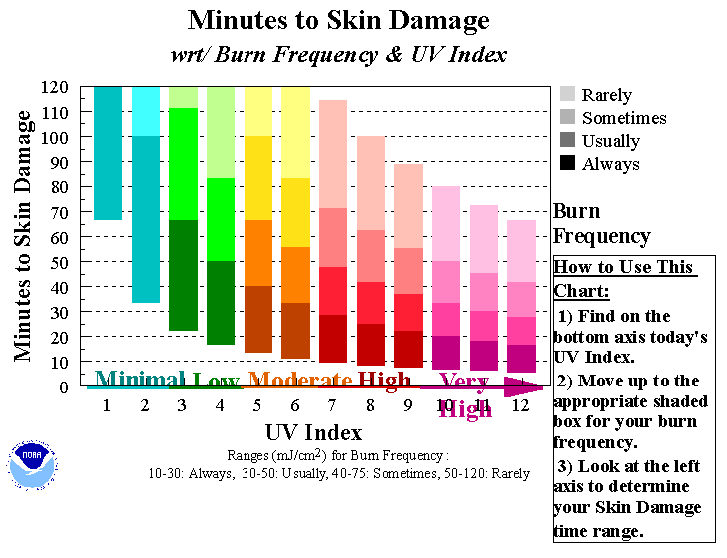ML8511 UV Sensor Hookup Guide
UV Burn!
With the UV sensor up an running, what can we do with it? If we integrate the UV exposure over time, we can calculate the total UV load. But how much UV is good?
From the Pacific University of Oregon:
... 15- to 30-min weekly exposure to UV-B required for Vitamin D synthesis ...
Monitoring could be good for basic levels. But how much is too much? From the Canadian Centre for Occupational Health and Safety:
For the UV-A or near ultraviolet spectral region (315 to 400 nm), exposure to the eye should not exceed 1 milliwatt per square centimeter (1.0 mW/cm2) for periods greater than 1000 seconds (approximately 16 minutes).
The UV sensor could be used on a pair of eyeglasses, to make sure you don't sunburn your eyes.
Because skin types vary greatly, it gets a bit harder to predict sun burn and skin damage. Luckily NOAA gives us some direction.
But we have a unit issue. Luckily,the US Navy clears that up:
Irradiance (a dose rate used in photobiology) is described in watts (unit of power) per square meter (W m2) or watts per square centimeter (W cm2). Radiant exposure (H), is dose, and is described in joules (unit of energy) per square meter (J m2) or joules per square centimeter (J cm2). Note that a watt is a joule per second thus the dose rate (W cm2) multiplied by the exposure duration (seconds) equals dose (J cm2).
